
It’s quite a rainy Wednesday afternoon at the Canalside Centre just outside of Bridgwater and Councillors are leaving the final meeting of Sedgemoor District Council. Similarly, there’s not a dry eye on the Tory side of the House as tributes abound to Leader Duncan McGinty, councillors gone but not forgotten, councillors forgotten but not gone, officers not yet made redundant and to each other generally. Sedgemoor had been abolished literally days before it’s 50th birthday and would be replaced by an all embracing, all devouring Unitary Superstate. From the Labour and Libdem side of the house there were pleasantries, toned down veiled references to why Sedgemoor might not have been the paradise of its legacy and genuine memories of when people pulled together in a common cause. But there was no point scoring, no political tirades, just friendly parting bon mots. A bit like at Westpoint before the Union and Confederate forces went their separate ways to meet again on some fractured battlefield of carnage and death. In the whispered words of one of the opposition leaders ‘You don’t crack jokes at a funeral‘….

Sedgemoor District Council was established on 1st April 1974 but a shadow authority was set up a year earlier in April 1973 with the first elections. There were 18 Conservatives,14 Labour, 12 Independents and 3 Liberals.
Before Sedgemoor, Somerset consisted of a series of Borough Councils for the urban areas and Rural Councils for the villages. There was an overall ‘ceremonial’ Somerset County Council and had been since 1888 but Bridgwater Borough Council was the radical hub of industrial Somerset, had been run since the 1950s by Labour and was based at the Town Hall. A strong and stable bastion of municipal socialism and popular with its working class base it had the most to lose by being submerged into a brave new tory world of the surrounding parishes. The Rural District Council covered those parishes and met at the Priory Offices within sight of the Town Hall and was dominated by Tories and Tories who didn’t need to call themselves Tories so were just ‘independents’.
Bonkers
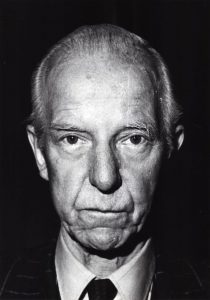
In 1966 the Labour Government of Harold Wilson set up a Royal Commission under John Redcliffe-Maud, an old Etonian and even older Bristolian, to review local government and all its boundaries.
In 1969 Maud brought back his recommendations and took home a peerage. Unitary Councils everywhere. Towns, Boroughs, Counties and Rural parishes would be abolished and combined into roughly equally sized ‘new’ unitary authorities which would deliver ALL the services.
It went out to consultation and the Towns and Boroughs were immediately up in arms at the potential loss of their historic powers. The Association of Municipal Corporations (that’s the Boroughs) launched a campaign straight away to keep Borough powers and to introduce instead of these Unitaries an extra layer of ‘Provinces’.

In Bridgwater, the Unitary solution looked like disaster. Not just the end of Labour rule but the end of the towns 500 years of civic independence. The Leader of Bridgwater Labour at the time was Fred Phillips. Fred was a well organised socialist who had been in the Czech resistance during the 1930s as the Nazis swept across Europe. Escaping to Britain he wound up in Bridgwater and almost single handedly rebuilt the Labour Party in the town, seized control of the Borough Council and kept it. In 1969 this report looked like all his work would go down the swanny.
Crackers
Phillips wrote a pamphlet ‘Bridgwater v. Maud’ and sent it to PM Harold Wilson, and Secretary of State Tony Crosland who was in charge of implementing the report. Describing Bridgwater as ‘the only shining red ruby in a cruel Tory sea of blue’, he refuted the Maudian claims that ‘town and country should no longer be kept apart’ saying “This was never true and still isn’t. The squires, the farmers, the landed gentry, the colonels and brigadiers, their only interest is to make sure their rates aren’t increased. We don’t want them setting council rents or saying yes or no to council house building!”
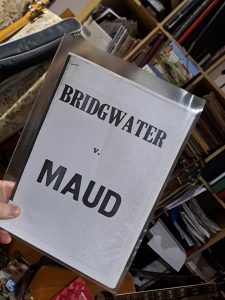
In his final paragraph he attacked Maud directly remembering that he had seen him as a young Don at a speech by Beveridge, the architect of the welfare state, and recalled him saying ‘When Hitler set out to destroy democracy he first set out to destroy local democracy’ before adding of Maud ‘Hitler would have been proud of these faceless unitary councillors he is proposing!”
Wilson was moved by the intervention and got Crosland to review the report and then…..Labour lost the 1970 General Election.
In 1970 the new Tory government of Edward Heath found the Redcliffe Maud report waiting on its desk. They had a new solution which could destroy the powers of the Labour boroughs for a lifetime. In classic Tory fashion they kept the unpopular new county divisions proposed (especially unpopular locally was the creation of Avon which extended Bristol’s power over nearby Bath and down into the Somerset coalfields and across to Weston Super Mare and then up into South Gloucestershire. Since its eventual demise known as CUBA ..the County that Used to Be Avon). But they added a combination of the towns and rural parishes so that the usually labour towns were suddenly dominated by largely Tory parishes. In this white heat of Tory pen thrusts Sedgemoor was born.
What was worse for Bridgwater, the Borough Council was abolished leaving only a pathetic little body called ‘the Charter Trustees’ in its stead. The 15 councillors elected for Sedgemoor that represented Bridgwater wards could meet and have thoughts and sometimes mention them to Sedgemoor. But no power. The one concession that they had, and which became an obsession to some, was the power to appoint a Mayor. Also without any power.
Sedgemoor would last in this form until 1 April 2023 when Redcliffe Maud’s vision finally won through and a new Unitary Council was created sweeping away those districts.
Nutjob
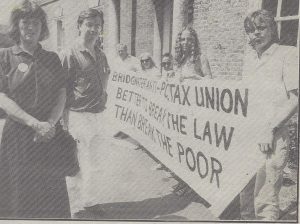
Meanwhile back to March 29th 2023 and I take up the story as Leader of the Opposition at a friendly meeting of tributes and kind words.
I was elected to Sedgemoor on July 12th 1990, defeating Gill Slocombe, who now sat opposite me as deputy leader of the ruling Tories. In those days Sedgemoor was anything but a welcoming place. I was elected at the height of the Poll Tax which the Tories of Margaret Thatcher were using to devastate communities across Britain. I won with more votes than all the other candidates put together and I stood on a platform of non payment and civil resistance. On the first day I entered the Council Chamber (then the Priory) the Bridgwater Anti Poll Tax Union joined me and occupied the chamber sending the Tories into fits of rage. For the next few years Tory Sedgemoor sent Bailiffs to repossess peoples possessions, attach earnings, drag people to court and even sent them to jail. I sat with 3 Labour colleagues -John Turner, Ken Richards and Mick Lerry, literally surrounded by a baying mob of Tories and got called a ‘parasite’ by one of them in the chamber and in the press for not paying the poll tax. Not an especially welcoming place.
Oingo Boingo
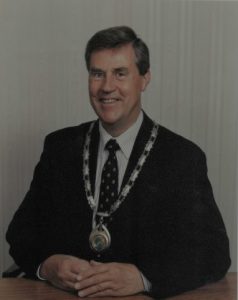
In 1991 the Tories lost heavily and Labours numbers doubled on Sedgemoor. Throughout the 90s Conservatives fell like nine pins until by 1995 they’d lost their majority and Labours first Chair of Sedgemoor Sandy Buchanan was sworn in. Ruling with Lib Dem support and a single seat majority over the Tories, Labour ran the district. Unthinkable to Fred Phillips, but it had happened.
Of course it didn’t last. The Labour vote went up but the Lib Dems collapsed (as it always does when they go into coalition). By 1999 the Tories were back and it wasn’t long before we were fighting tooth and nail.
In 2008 the Tories tried to close the Sedgemoor Splash. Labour opposed it and some of us occupied it to try to prevent it. The Tories demolished it anyway (not with us in it I hasten to add..) and then a frantic few years of trying to prevent them building a Tesco on it.

At that point it looked to everyone like ‘same old Sedgemoor, same old Tories’. But then there was a change afoot. I mentioned this at the final meeting. I’m not of course party to the inner workings of the Tory Party but round about when Chief Executive Kerry Rickards left, with his ‘The Developer is King’ maxim, and ‘Bridgwater girl’ Allison Griffin took on the job of Chief Exec in a major gender realignment exercise, there was suddenly a new focus in which Bridgwater seemed to be getting a fairer share of the cake. To me that looked like Leader Duncan McGinty had acknowledged and sanctioned this change of direction. The new look Sedgemoor was building council houses and whilst it continued to still be a bit too eager to please developers and rush through planning matters without the necessary infrastructure , it nevertheless put good affordable housing on a number of brownfield sites, spruced up and maintained the many parks and gardens and even added the Meads Eco Park to the public domain during this time.
Put that chicken down missus

The best example of Sedgemoor’s more inclusive and welcoming approach was a coming together with the Labour Group and Bridgwater Town Councils campaign for a leisure led development on Northgate instead of Tescos.
Northgate Yard became Sedgemoor’s legacy project and could have been mistaken for ‘municipal socialism’ in action. In fact it was the realisation that the private sector would not deliver that was crucial to the success of the project. Sedgemoors talented team of officers focused on ‘Getting Northgate Done‘. Without Doug Bamsey’s lead , Stuart Martin’s drive and Alison Turners financial control, would it have achieved the success it did? I made a point of thanking the skilled and devoted workforce.
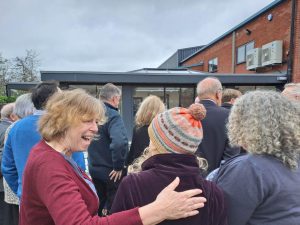
It could be said that Sedgemoor was taken from us too soon. Just as they were ‘getting it right’. But by the end of the 50 year settling in period, Bridgwater Town Council was back on the scene and was a new powerful player bringing back the legacy of the Borough. Sedgemoor’s gone and the Town can only get stronger. And that’s what will be needed in the new all consuming Unitary future that beckons.
The Benificent Oz
The meeting finished with everyone on good terms and wishing each other well. Councillors got presented with small glass trophies with clocks that didn’t work embedded in them and group leaders got massive road signs saying ‘Welcome to Sedgemoor‘ on them. Mine’s already in my garden.
There was a group picture where I was made to sit in the front next to Gill Slocombe. It was taken by Brian Bateman from atop his mobile stepladder, so hopefully it looked more like a wedding than a funeral.
And then we left. It rained some more. And I used my Sedgemoor road sign as an umbrella.

